33985-68-1
| 中文名 | DIM-C-pPhOCH3 |
|---|---|
| 英文名 | 3,3′-[(4-Methoxyphenyl)methylene]bis-1H-indole |
| 英文别名 |
1,1-bis(3'-Indolyl)-1-(p-methoxyphenyl)methane
3-[1H-indol-3-yl-(4-methoxyphenyl)methyl]-1H-indole DIM-C-pPhOCH3 |
| 描述 | DIM-C-pPhOCH3 是一种 Nur77 激动剂。Nur77 是一种孤儿核受体。 |
|---|---|
| 相关类别 | |
| 靶点 |
Nur77[1] |
| 体外研究 | DIM-C-pPhOCH3降低RKO结肠癌细胞的存活率并诱导细胞凋亡,这伴随着肿瘤坏死因子相关凋亡诱导配体(TRAIL)蛋白的诱导。 DIM-C-pPhOCH3还诱导Nur77非依赖性细胞凋亡。 DIM-C-pPhOCH3(10μM)在处理24,48或72小时后抑制细胞生长,并且在72小时后观察到最大抑制反应,其中存在相当大的细胞脱离和死细胞。 72小时后观察到的DIM-C-pPhOCH3的生长抑制作用也伴随着几种凋亡标记,包括PARP切割和胱天蛋白酶-3,半胱天冬酶-9和半胱天冬酶-8的切割。用DIM-C-pPhOCH3处理RKO细胞48小时后也观察到PARP裂解[1]。 |
| 体内研究 | DIM-C-pPhOCH3(25mg/kg/d)也抑制携带RKO细胞异种移植物的无胸腺裸鼠中的肿瘤生长。还在携带RKO细胞异种移植物的无胸腺裸鼠中研究了DIM-C-pPhOCH3(25mg/kg/d)对结肠肿瘤生长的影响。与玉米油对照相比,使用DIM-C-pPhOCH3治疗可显着降低肿瘤体积和最终肿瘤重量[1]。 |
| 细胞实验 | 用DMSO或12.5μMDIM-C-pPhOCH3处理RKO细胞2小时和6小时。分离RNA用于逆转录-PCR(RT-PCR)实验并分析基因表达,并确定每个时间点和DMSO对照的三个重复。分析微阵列数据[1]。 |
| 动物实验 | 小鼠[1]使用雄性无胸腺裸鼠(Foxn1nu,年龄7-8周)。在特定的无病原体条件下将小鼠圈养并保持在层流柜中。通过将体外培养的RKO细胞(5×106 /150μL)皮下注射到个体小鼠的侧腹来建立异种移植物。允许肿瘤生长4天直至肿瘤可触知。然后将小鼠随机分成两组,每组六只小鼠,并通过口服强饲法用玉米油或25mg / kg / d DIM-C-pPhOCH3给药21天。称重小鼠,测量肿瘤大小[1]。 |
| 参考文献 |
| 分子式 | C24H20N2O |
|---|---|
| 分子量 | 352.42800 |
| 精确质量 | 352.15800 |
| PSA | 40.81000 |
| LogP | 5.83800 |
| 储存条件 | 2-8℃ |
|
SECTION 1: Identification of the substance/mixture and of the company/undertaking Product identifiers Product name: DIM-C-pPhOCH3 REACH No.: A registration number is not available for this substance as the substance or its uses are exempted from registration, the annual tonnage does not require a registration or the registration is envisaged for a later registration deadline.
CAS-No.: 33985-68-1 Relevant identified uses of the substance or mixture and uses advised against Identified uses: Laboratory chemicals, Manufacture of substances SECTION 2: Hazards identification Classification of the substance or mixture Not a hazardous substance or mixture according to Regulation (EC) No. 1272/2008. This substance is not classified as dangerous according to Directive 67/548/EEC. Label elements The product does not need to be labelled in accordance with EC directives or respective national laws. Other hazards - none SECTION 3: Composition/information on ingredients Substances : 1,1-bis(3′-Indolyl)-1-(p-methoxyphenyl)methane; 3,3'-[(4- Synonyms Methoxyphenyl)methylene]bis-1H-indole Formula: C24H20N2O Molecular Weight: 352,43 g/mol CAS-No.: 33985-68-1 No components need to be disclosed according to the applicable regulations. SECTION 4: First aid measures Description of first aid measures If inhaled If breathed in, move person into fresh air. If not breathing, give artificial respiration. In case of skin contact Wash off with soap and plenty of water. In case of eye contact Flush eyes with water as a precaution. If swallowed Never give anything by mouth to an unconscious person. Rinse mouth with water. Most important symptoms and effects, both acute and delayed The most important known symptoms and effects are described in the labelling (see section 2.2) and/or in section 11 Indication of any immediate medical attention and special treatment needed no data available SECTION 5: Firefighting measures Extinguishing media Suitable extinguishing media Use water spray, alcohol-resistant foam, dry chemical or carbon dioxide. Special hazards arising from the substance or mixture nitrogen oxides (NOx), Cobalt/cobalt oxides Advice for firefighters Wear self contained breathing apparatus for fire fighting if necessary. Further information no data available SECTION 6: Accidental release measures Personal precautions, protective equipment and emergency procedures Avoid dust formation. Avoid breathing vapours, mist or gas. For personal protection see section 8. Environmental precautions Do not let product enter drains. Methods and materials for containment and cleaning up Sweep up and shovel. Keep in suitable, closed containers for disposal. Reference to other sections For disposal see section 13. SECTION 7: Handling and storage Precautions for safe handling Provide appropriate exhaust ventilation at places where dust is formed.Normal measures for preventive fire protection. For precautions see section 2.2. Conditions for safe storage, including any incompatibilities Store in cool place. Keep container tightly closed in a dry and well-ventilated place. Recommended storage temperature: 2 - 8 °C Specific end use(s) A part from the uses mentioned in section 1.2 no other specific uses are stipulated SECTION 8: Exposure controls/personal protection Control parameters Components with workplace control parameters Exposure controls Appropriate engineering controls General industrial hygiene practice. Personal protective equipment Eye/face protection Use equipment for eye protection tested and approved under appropriate government standards such as NIOSH (US) or EN 166(EU). Skin protection Handle with gloves. Gloves must be inspected prior to use. Use proper glove removal technique (without touching glove's outer surface) to avoid skin contact with this product. Dispose of contaminated gloves after use in accordance with applicable laws and good laboratory practices. Wash and dry hands. The selected protective gloves have to satisfy the specifications of EU Directive 89/686/EEC and the standard EN 374 derived from it. Body Protection Choose body protection in relation to its type, to the concentration and amount of dangerous substances, and to the specific work-place., The type of protective equipment must be selected according to the concentration and amount of the dangerous substance at the specific workplace. Respiratory protection Respiratory protection is not required. Where protection from nuisance levels of dusts are desired, use type N95 (US) or type P1 (EN 143) dust masks. Use respirators and components tested and approved under appropriate government standards such as NIOSH (US) or CEN (EU). Control of environmental exposure Do not let product enter drains. SECTION 9: Physical and chemical properties Information on basic physical and chemical properties a) AppearanceForm: solid b) Odourno data available c) Odour Thresholdno data available d) pHno data available e) Melting point/freezing179 - 181 °C point f) Initial boiling point and no data available boiling range g) Flash pointno data available h) Evapouration rateno data available i) Flammability (solid, gas) no data available j) Upper/lowerno data available flammability or explosive limits k) Vapour pressureno data available l) Vapour densityno data available m) Relative densityno data available n) Water solubilityno data available o) Partition coefficient: n- no data available octanol/water p) Auto-ignitionno data available temperature q) Decompositionno data available temperature r) Viscosityno data available s) Explosive propertiesno data available t) Oxidizing propertiesno data available Other safety information no data available SECTION 10: Stability and reactivity Reactivity no data available Chemical stability Stable under recommended storage conditions. Possibility of hazardous reactions no data available Conditions to avoid no data available Incompatible materials Strong oxidizing agents Hazardous decomposition products Other decomposition products - no data available In the event of fire: see section 5 SECTION 11: Toxicological information Information on toxicological effects Acute toxicity no data available Skin corrosion/irritation no data available Serious eye damage/eye irritation no data available Respiratory or skin sensitisation no data available Germ cell mutagenicity no data available Carcinogenicity IARC:No component of this product present at levels greater than or equal to 0.1% is identified as probable, possible or confirmed human carcinogen by IARC. Reproductive toxicity no data available Specific target organ toxicity - single exposure no data available Specific target organ toxicity - repeated exposure no data available Aspiration hazard no data available Additional Information RTECS: Not available To the best of our knowledge, the chemical, physical, and toxicological properties have not been thoroughly investigated. SECTION 12: Ecological information Toxicity no data available Persistence and degradability no data available Bioaccumulative potential no data available Mobility in soil no data available Results of PBT and vPvB assessment PBT/vPvB assessment not available as chemical safety assessment not required/not conducted Other adverse effects no data available SECTION 13: Disposal considerations Waste treatment methods Product Offer surplus and non-recyclable solutions to a licensed disposal company. Contaminated packaging Dispose of as unused product. SECTION 14: Transport information UN number ADR/RID: -IMDG: -IATA: - UN proper shipping name ADR/RID: Not dangerous goods IMDG: Not dangerous goods IATA:Not dangerous goods Transport hazard class(es) ADR/RID: -IMDG: -IATA: - Packaging group ADR/RID: -IMDG: -IATA: - Environmental hazards ADR/RID: noIMDG Marine pollutant: noIATA: no Special precautions for user no data available SECTION 15 - REGULATORY INFORMATION N/A SECTION 16 - ADDITIONAL INFORMATION N/A |
| 危险品运输编码 | NONH for all modes of transport |
|---|
| 上游产品 9 | |
|---|---|
| 下游产品 0 | |


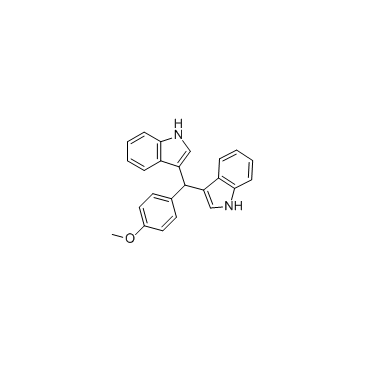
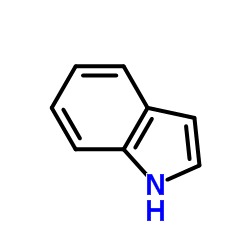


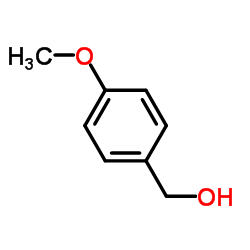

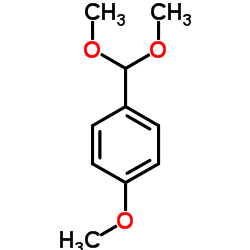
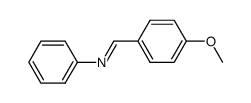
![2-[(4-methoxyphenyl)methylidene]cyclohexan-1-one结构式](https://image.chemsrc.com/caspic/333/5765-29-7.png)
![2,6-bis[(4-methoxyphenyl)methylidene]cyclohexan-1-one结构式](https://image.chemsrc.com/caspic/328/6275-32-7.png)